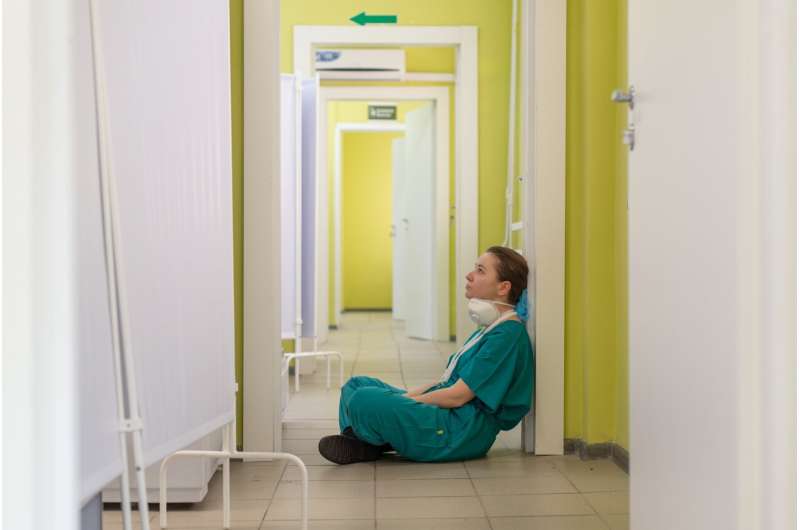This article has been reviewed according to Science X's editorial process and policies. Editors have highlighted the following attributes while ensuring the content's credibility:
fact-checked
peer-reviewed publication
trusted source
proofread
Hospital understaffing and poor work conditions associated with physician and nurse burnout and intent to leave

A unique collaborative study on hospital clinician well-being by teams at 60 of the nation's best hospitals, defined by Magnet Hospital Recognition, was published today in JAMA Health Forum. The study found that physicians and nurses, even at hospitals known to be good places to work, experienced adverse outcomes during the pandemic and want hospital management to make significant improvements in their work environments and in patient safety. The solutions to high hospital clinician burnout and turnover, they say, are not resilience training for clinicians to better cope with adverse working conditions, but organizational improvements that provide safe workloads and better work-life balance.
Researchers at Penn Nursing's Center for Health Outcomes and Policy Research (CHOPR), in collaboration with the U.S. Clinician Wellbeing Study Consortium, sought information in 2021 from 21,050 physicians and registered nurses practicing in 60 Magnet recognized hospitals in 22 states. Forty-seven percent of nurses and 32% of physicians experienced high burnout. Twenty-three percent of physicians and 40% of nurses said they would leave their jobs if possible. Less than 10% of physicians and nurses reported experiencing joy in their work. Not having enough nurses to care for patients, having little control over workloads, lack of confidence in management to resolve problems in patient care, and concerns about patient safety were all associated with higher burnout, job dissatisfaction, and intent to leave among both nurses and physicians.
Lead author Linda H Aiken, Ph.D., Professor of Nursing and Sociology, Founding Director of the Center for Health Outcomes and Policy Research, and Senior Fellow of the Leonard Davis Institute for Health Economics at the University of Pennsylvania, said, "Physicians and nurses largely agree about what hospital management could do to address their burnout, job dissatisfaction, and plans to leave their current jobs; they want improved staffing, modern working conditions in which they can spend more time in direct patient care, greater control over their workloads and work schedules, and a higher priority on patient safety."
Eighty-seven percent of nurses and 45% of physicians said improving nurse staffing was very important to their own mental health and well-being. Other high priorities for clinicians were health breaks without interruption and reduced time spent on documentation. Aiken added, "Many clinicians are downright hostile to programs—like resilience training—that are designed to adapt them to poor work conditions; clinicians want the working conditions improved."
Clinicians are concerned about quality and safety of care. Half of physicians and nurses lack confidence that their patients can safely manage their care after discharge, highlighting the need for improvement in discharge planning. Patient safety remains a concern, with 26% of nurses and 12% of physicians giving their own hospitals an unfavorable patient safety grade. Thirty-nine percent of nurses and 33% of physicians feel mistakes are held against them, contrary to recommendations of the National Academy of Medicine to search for and correct system deficiencies that cause most medical errors.
The study was carried out by Penn Nursing's Center for Health Outcomes and Policy Research in collaboration with the U.S. Clinician Wellbeing Study Consortium, composed of 60 Magnet Hospitals. The study took place in 2021 during the COVID-19 pandemic, a time when all US hospitals were severely challenged. Previous research shows that clinicians in hospitals like Magnet hospitals with better work environments prior to the pandemic had better outcomes during the pandemic. The Consortium committed to this study to learn from their experiences during the pandemic how to sustain and further improve their favorable work environments to better withstand external threats and to rebound rapidly.
More information: Linda H. Aiken et al, Physician and Nurse Well-Being and Preferred Interventions to Address Burnout in Hospital Practice, JAMA Health Forum (2023). DOI: 10.1001/jamahealthforum.2023.1809



















